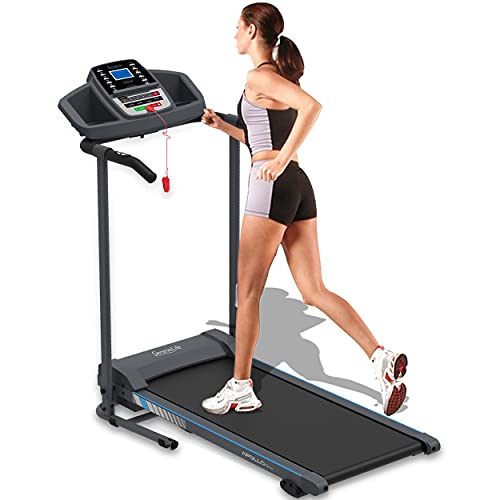The Best Advice You'll Receive About Non Electric Treadmill
The Rise of Non-Electric Treadmills: An Eco-Friendly Choice for Fitness Enthusiasts
Over the last few years, the physical fitness industry has witnessed a rise in need for non-electric treadmills. As individuals end up being more mindful of their carbon footprint and look for sustainable choices for their exercise routines, non-electric treadmills have become an appealing alternative to their motorized counterparts. This post dives into the advantages, types, and functions of non-electric treadmills, culminating in an extensive FAQ area to resolve typical questions.
What is a Non-Electric Treadmill?
A non-electric treadmill, typically referred to as a manual treadmill, operates without a source of power. Instead of being propelled mechanically, the user's body weight and motion drive the belt. This style develops a distinct experience, frequently needing more effort but using a number of advantages in regards to fitness and sustainability.
Advantages of Using Non-Electric Treadmills
Sustainability: Non-electric treadmills remove the need for electricity, making them eco-friendly. This decrease in energy consumption can substantially add to lower electricity expenses and a reduced carbon footprint.
Improved Workout Efficiency: Users must actively engage their muscles to preserve speed, which can result in more effective exercises. This increased effort can translate to a greater calorie burn compared to electric models.
Adaptability: Many non-electric treadmills can be changed to offer different incline levels. This feature enables users to tailor their exercises, targeting different muscle groups and challenging themselves in brand-new methods.
Durability: Generally, non-electric treadmills have less mechanical elements than powered variations, leading to lower upkeep expenses and increased durability.
Compact Design: Many non-electric treadmills are designed with mobility in mind, making them easy to move and save, ideal for those with restricted space.
Kinds Of Non-Electric Treadmills
Non-electric treadmills can be categorized into several types based on design and features:
Type
Description
Pros
Cons
Woodway Treadmills
Understood for their curved shape, supplying a distinct running experience.
Lowers effect on joints, perfect for runners.
Typically more costly.
Flat Non-Electric Treadmills
Basic design offering straightforward functionality.
Affordable and easy to utilize.
May not have advanced features.
Incline Manual Treadmills
Allows users to set an incline for included difficulty.
Flexible and adjustable exercises.
Can be physically demanding.
Folding Non-Electric Treadmills
Space-saving styles that can be easily stored away.
Convenient for little living areas.
May be less sturdy than non-folding options.
Key Features to Consider
When picking a non-electric treadmill, customers ought to prioritize the following functions:
Build Quality: Ensure that the frame is tough and made of resilient products to withstand day-to-day use.
Running Surface: A wider and longer running surface area supplies a more comfortable experience, especially for taller people.
Incline Options: Adjustable incline settings can boost workout variety and intensity.
Weight Capacity: Check the weight limit to guarantee the treadmill accommodates all intended users.
Mobility: If area is a concern, look for a light-weight treadmill with wheels for simple motion.
Guarantee: An excellent guarantee reflects the producer's self-confidence in their item, providing comfort to customers.
Non-Electric Treadmill vs. Electric Treadmill
Feature
Non-Electric Treadmill
Electric Treadmill
Source of power
Manual (no electricity required)
Requires electricity
Upkeep
Minimal, typically requires no repair work
May need mechanical maintenance
Calorie Burning
Usually greater due to user effort
Varies, typically lower for the very same speed
Customizability
Restricted to manual changes
Offers numerous pre-set programs
Cost
Typically more cost effective
Can be more pricey due to functions
Regularly Asked Questions (FAQ)
1. Are non-electric treadmills appropriate for beginners?
Yes, non-electric treadmills can be appropriate for newbies, although they might require a steeper learning curve for those not familiar with manual treadmills. A gentle start on a low incline can alleviate amateurs into their physical fitness journey.
2. How do I keep a non-electric treadmill?
Upkeep is minimal. Routine cleaning and examining for any wear on the belt or deck can assist lengthen the life of the treadmill. Constantly describe the manufacturer's standards for detailed maintenance directions.
3. Can I work on a non-electric treadmill?
Absolutely! Many non-electric treadmills are created to accommodate running. Nevertheless, users must start by walking and gradually increase their speed and incline as they develop strength and endurance.
4. How do non-electric treadmills deal with weight?
Most non-electric treadmills have a weight capability similar to electric designs. However, www.hometreadmills.uk is necessary to inspect the specs to guarantee correct assistance for the user's weight.
5. Are there any drawbacks to utilizing a non-electric treadmill?
Some users may discover that non-electric treadmills need more effort, potentially making them more strenuous. Additionally, they might lack advanced functions discovered in electric designs, such as built-in exercises or heart rate screens.
As more people seek eco-friendly and efficient physical fitness choices, non-electric treadmills have begun to catch the attention of workout lovers. With their blend of sustainability, efficiency, and toughness, these manual gadgets can raise any exercise regimen. By understanding their advantages, types, and necessary features, consumers can make informed choices in choosing the right treadmill for their requirements, ultimately supporting a healthier lifestyle while adding to a greener world.
